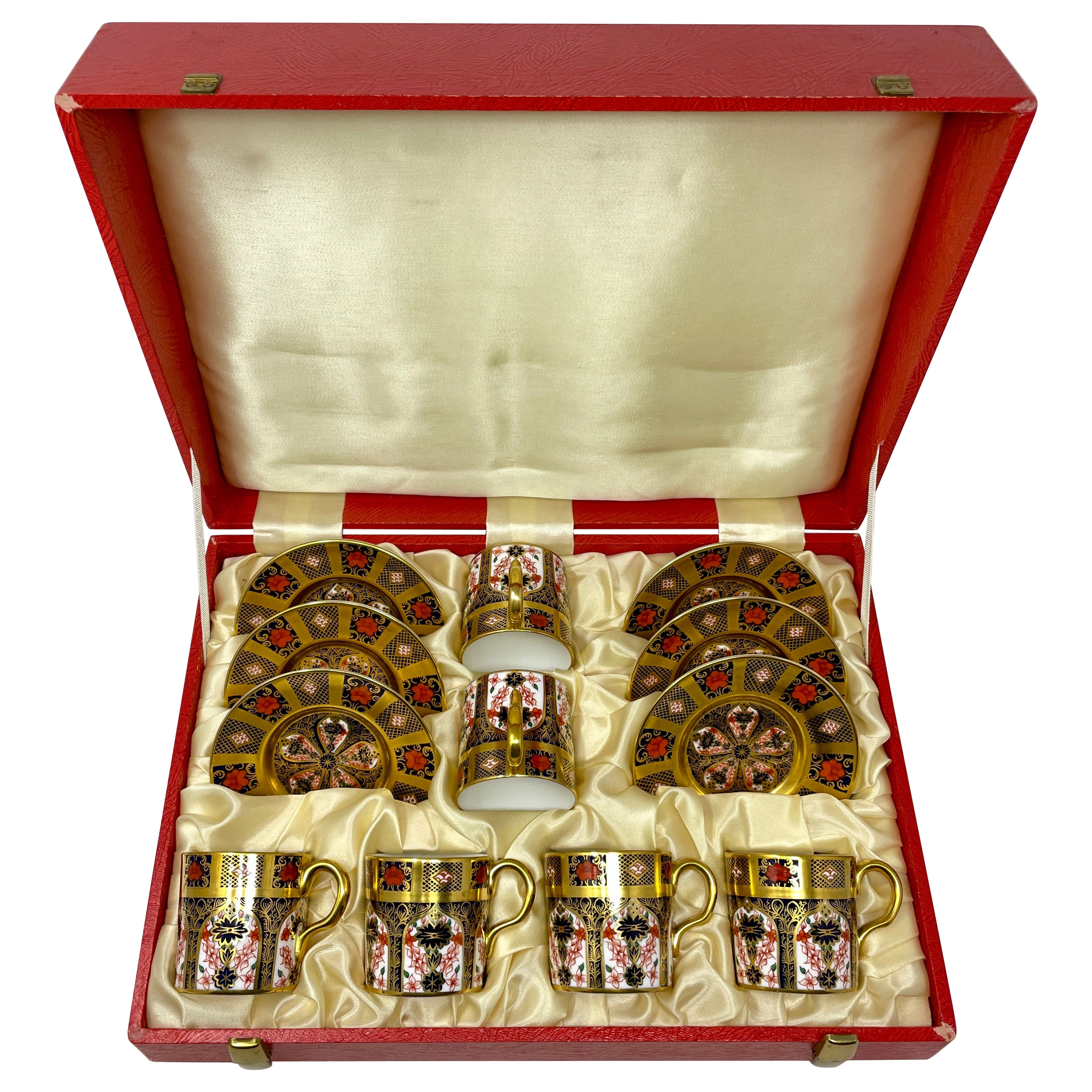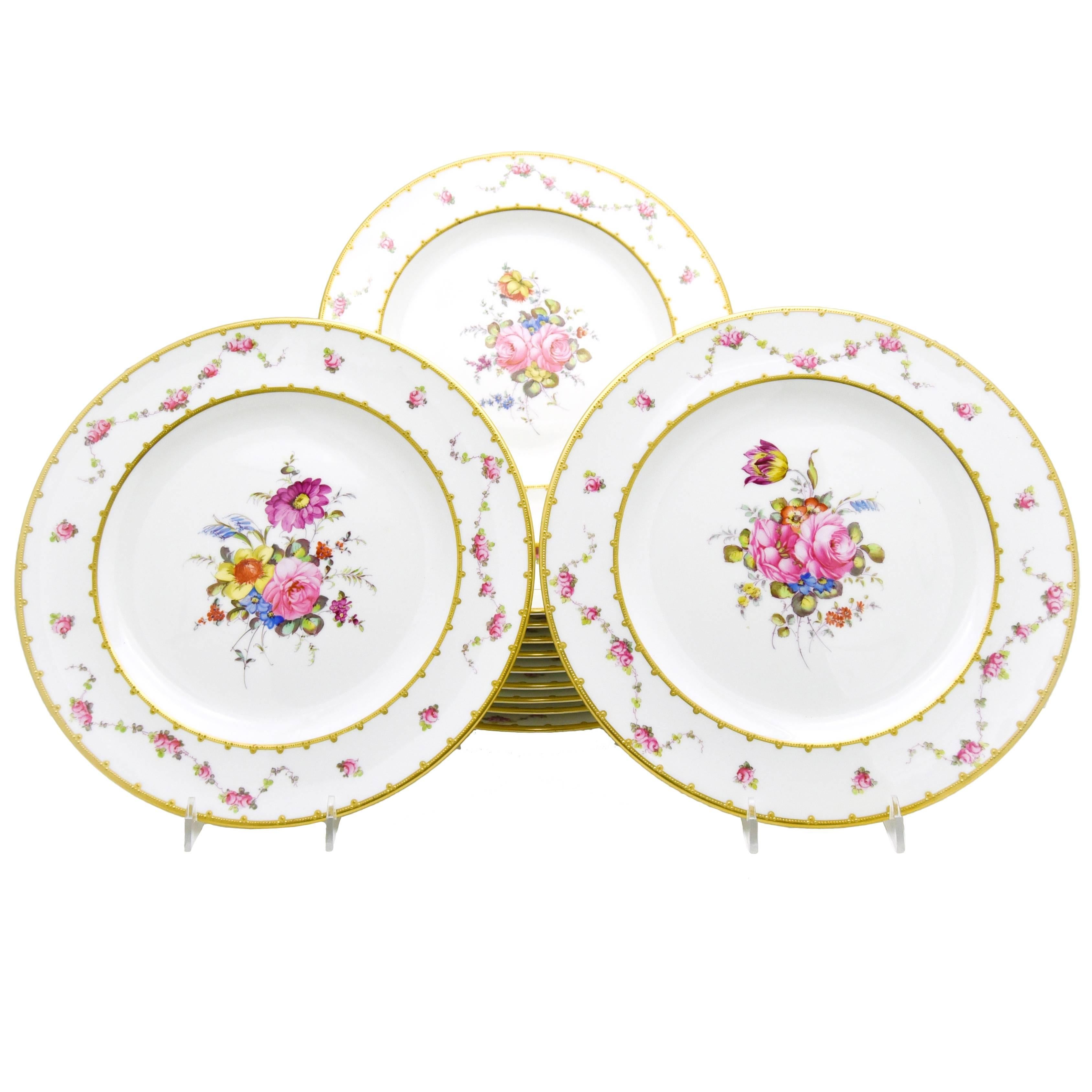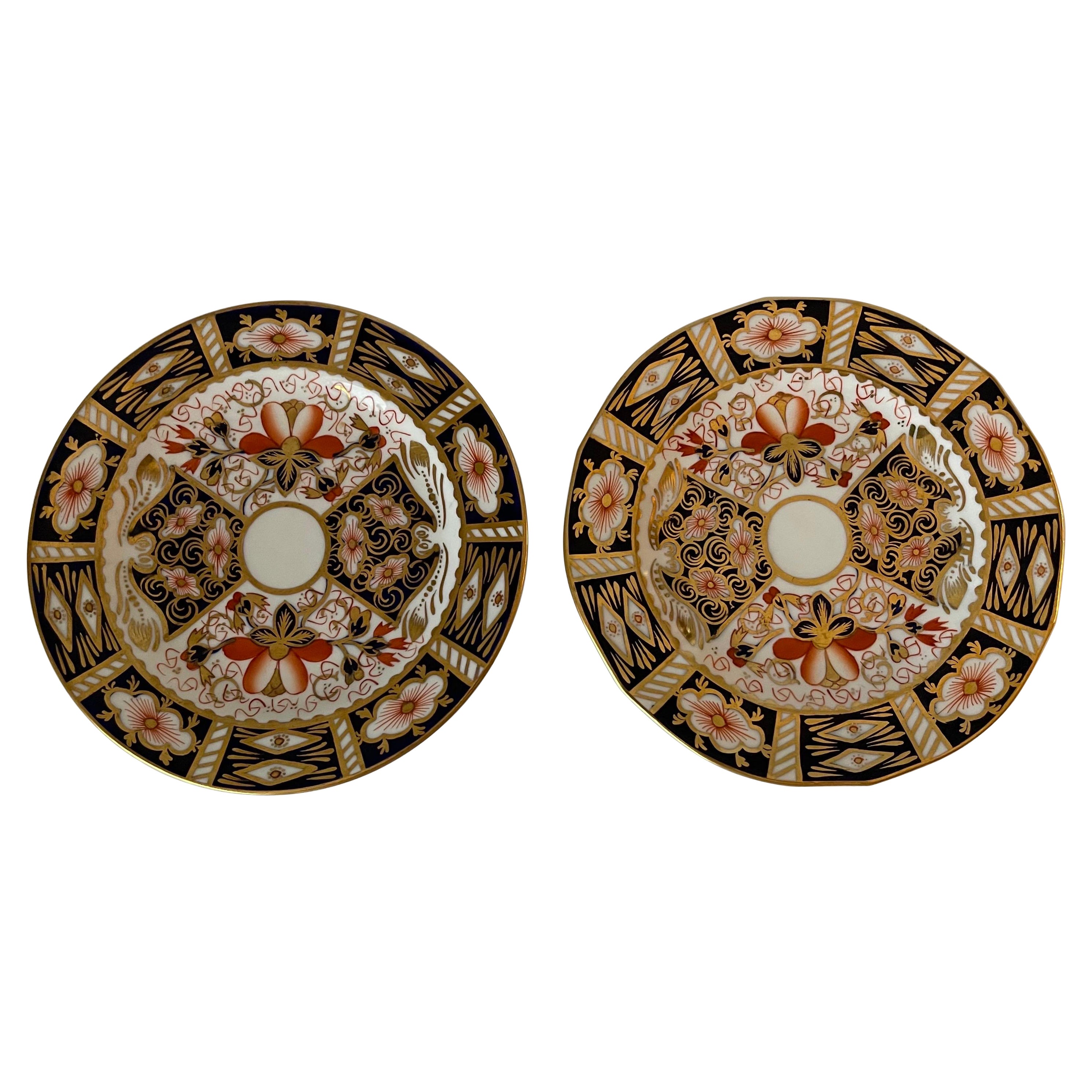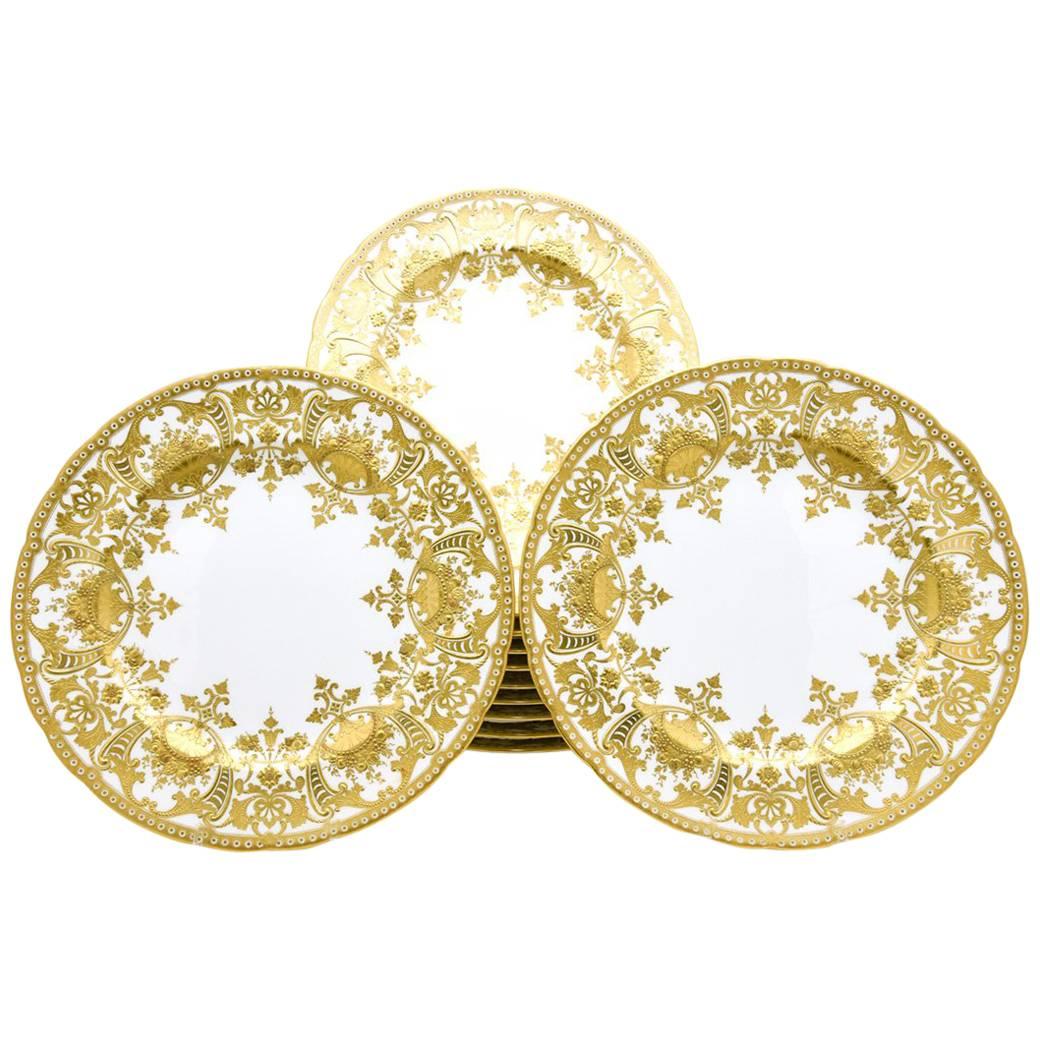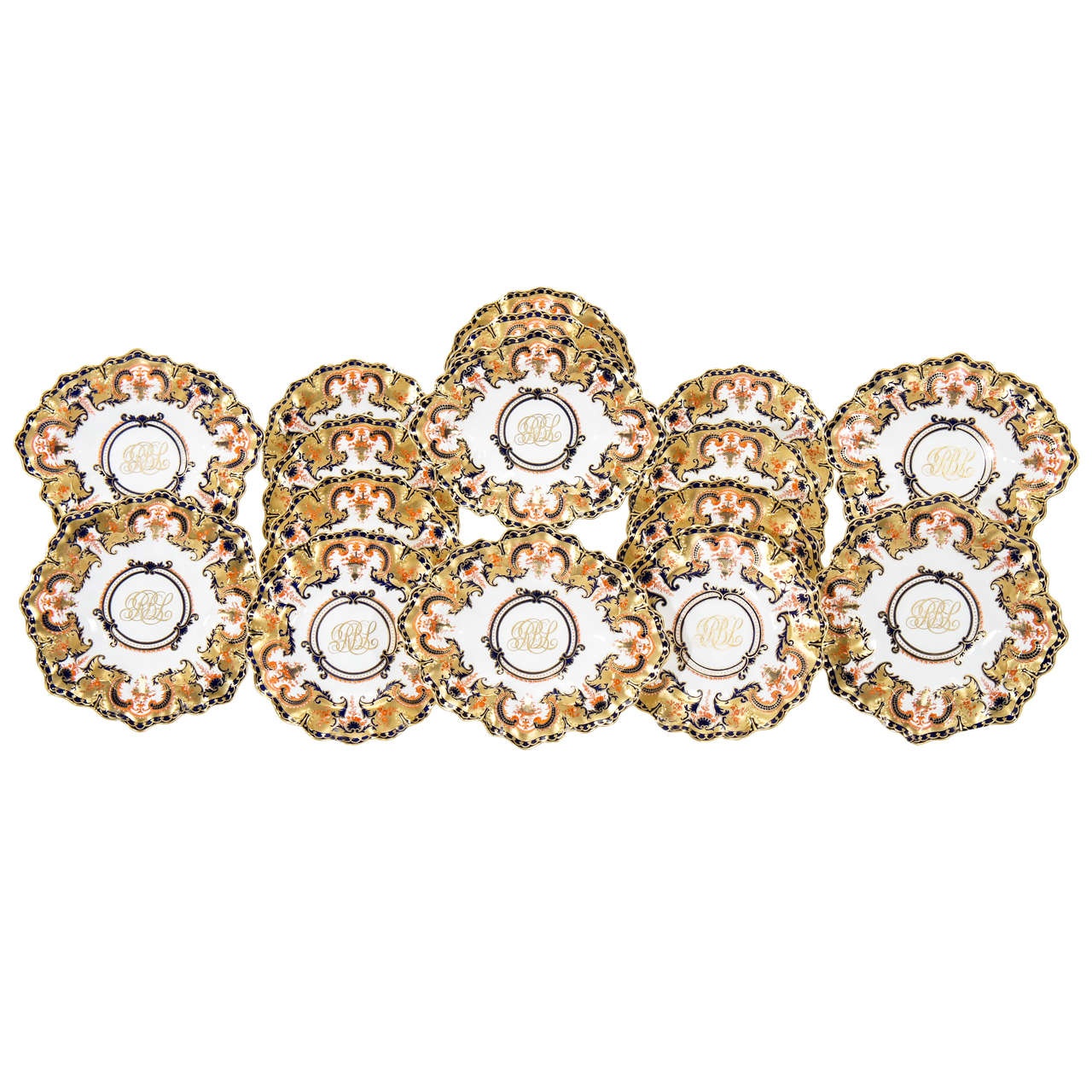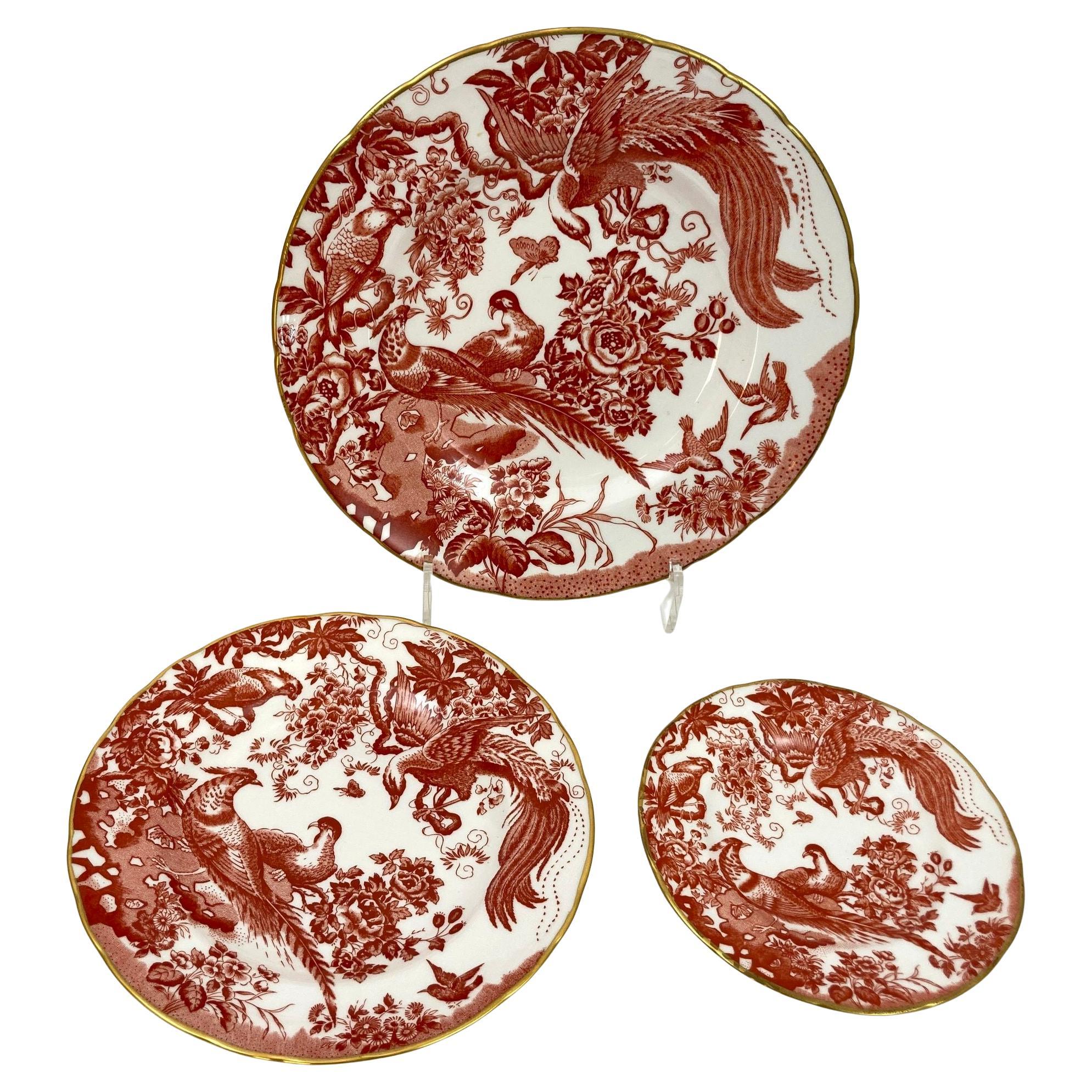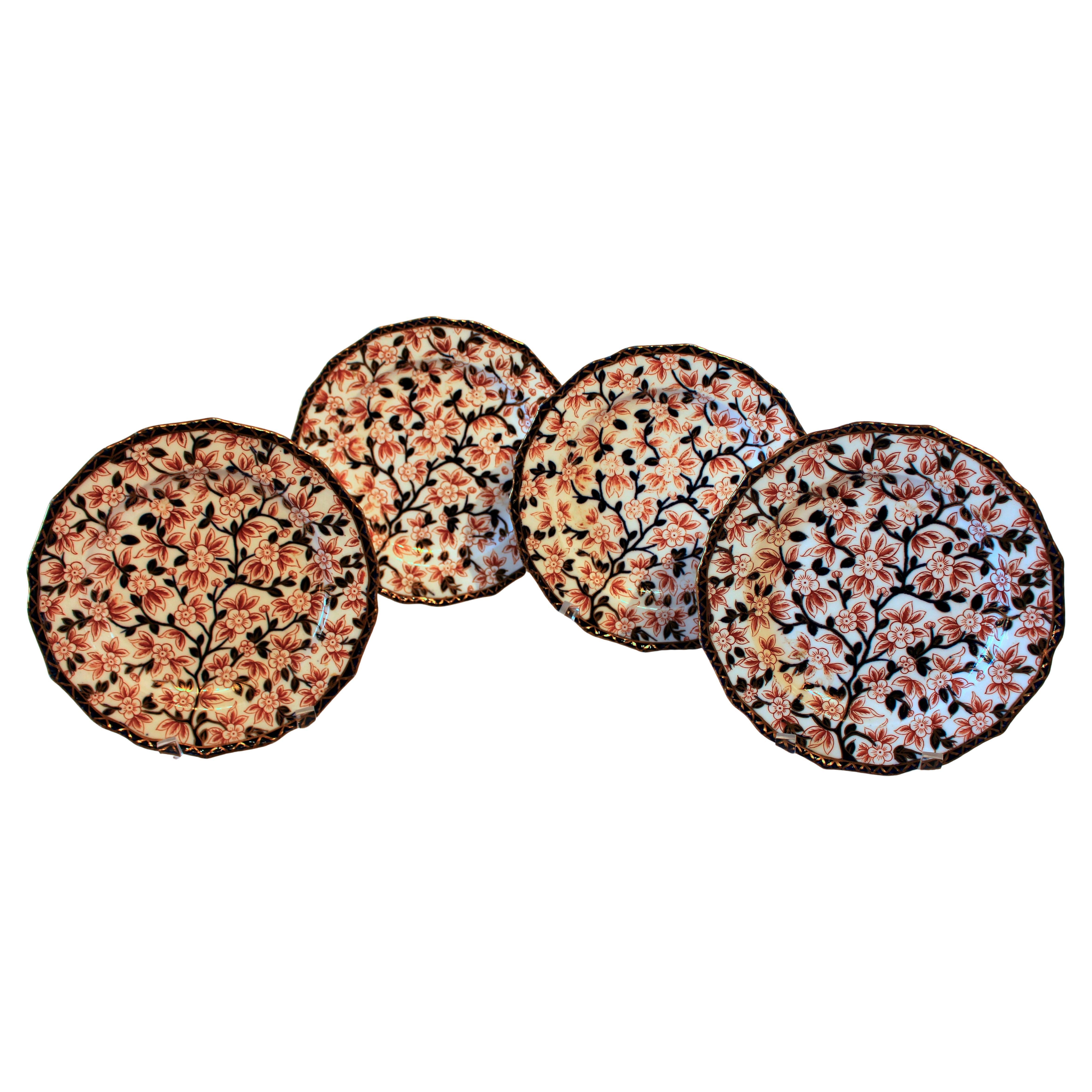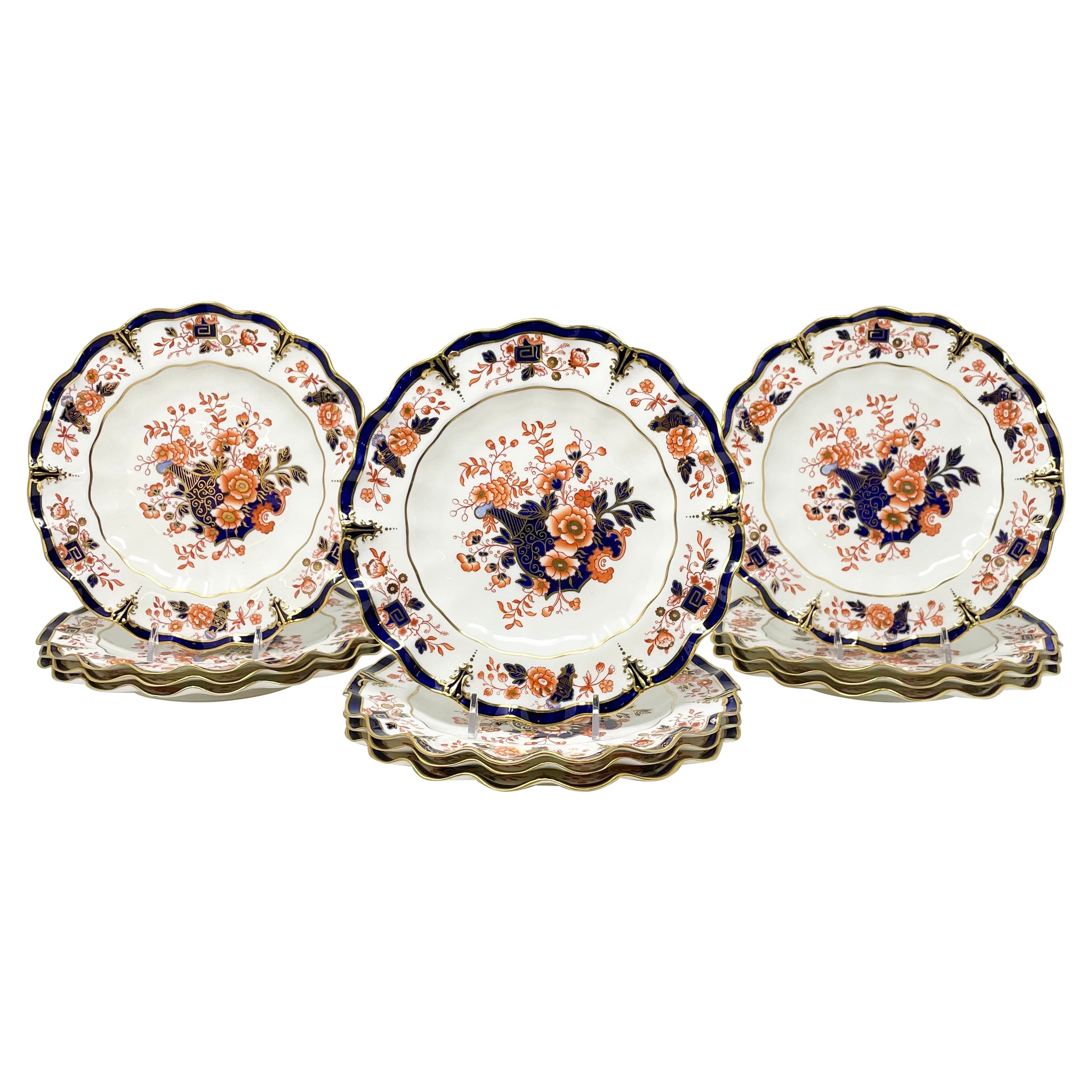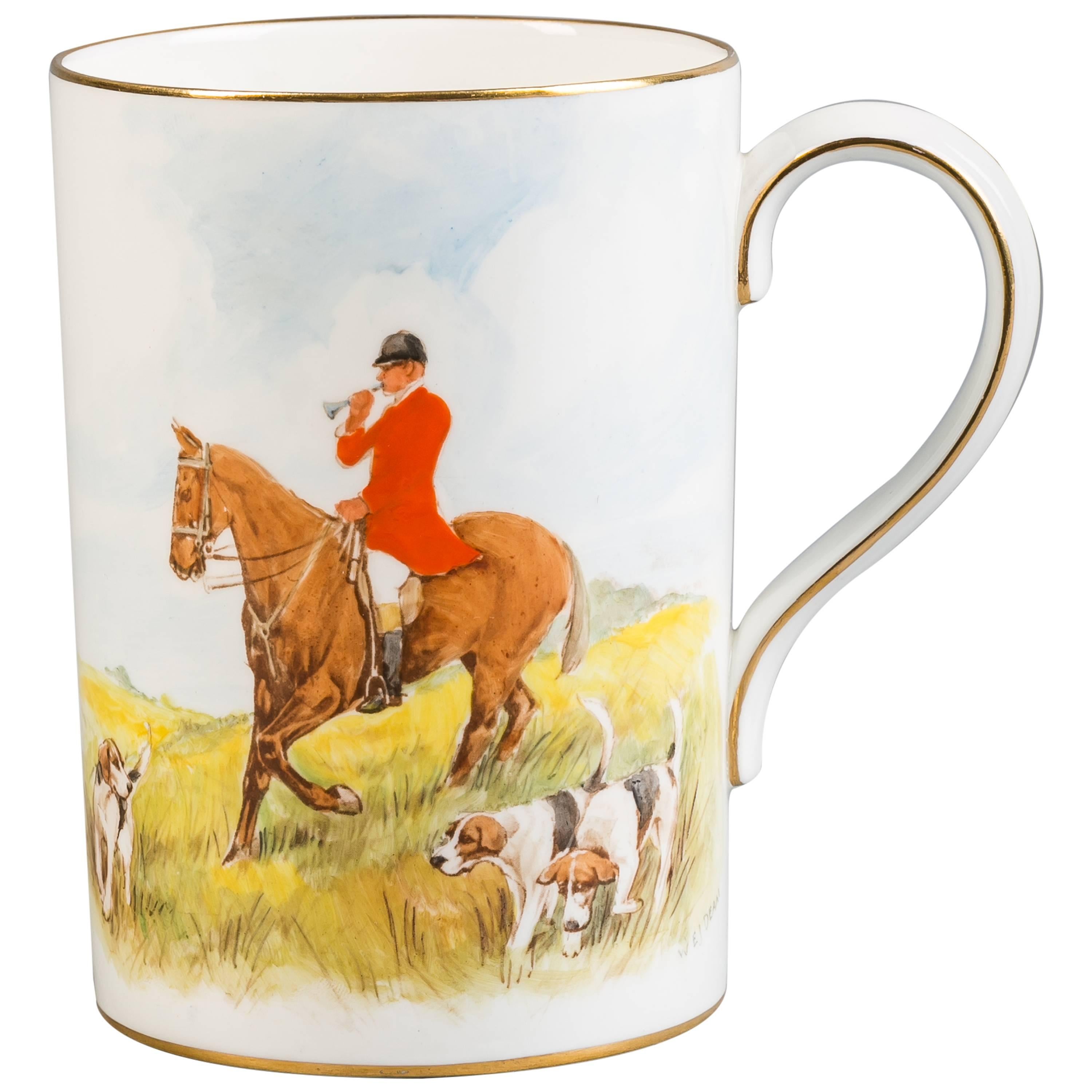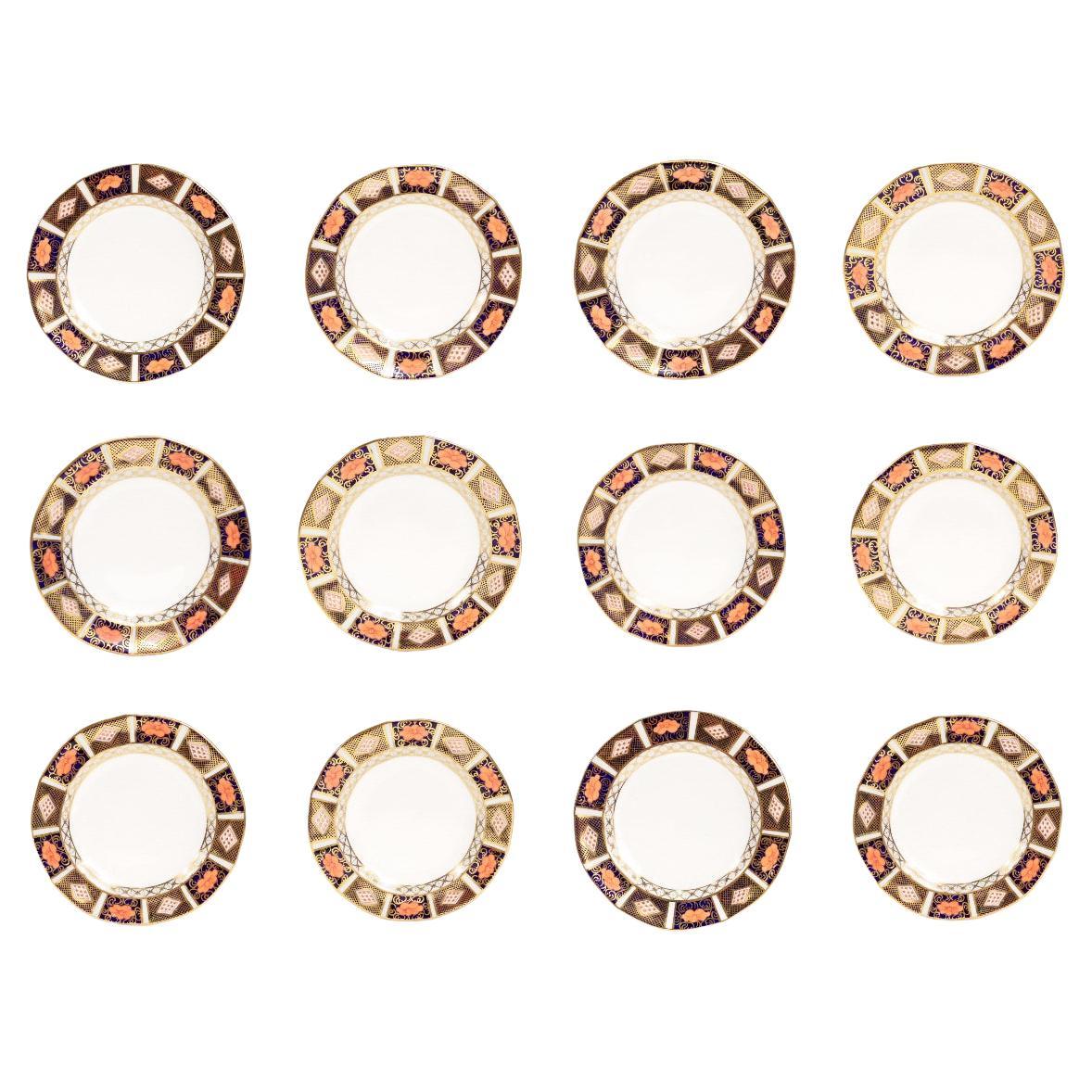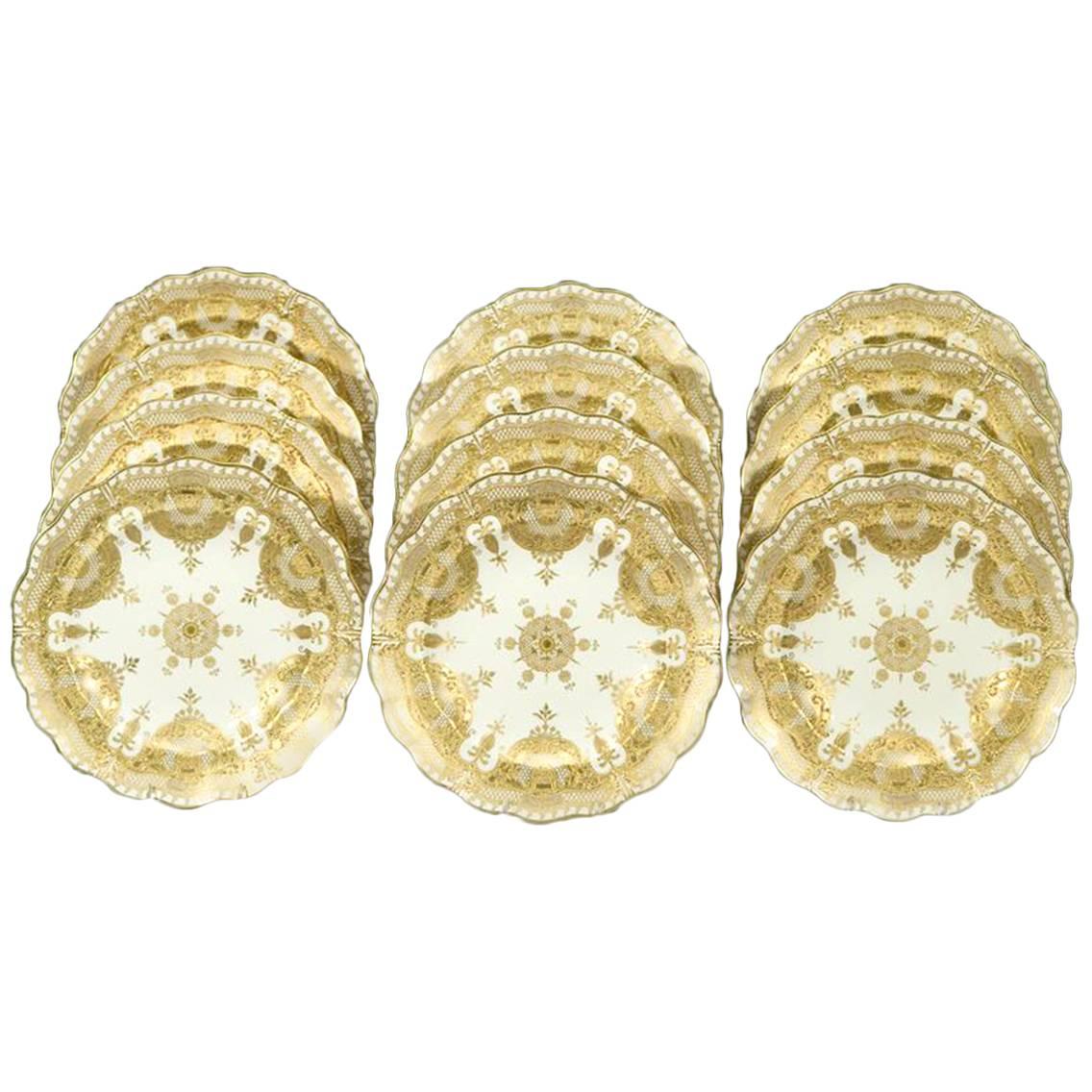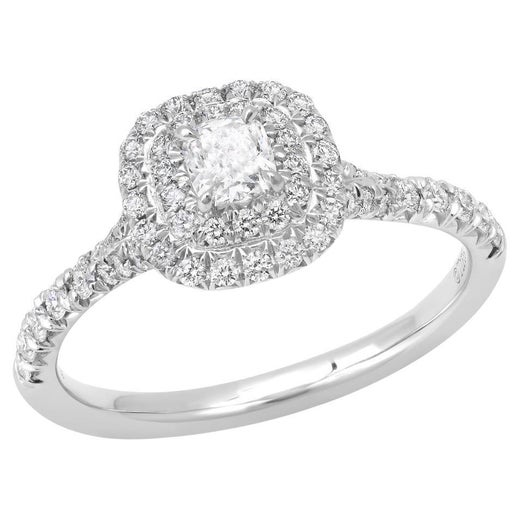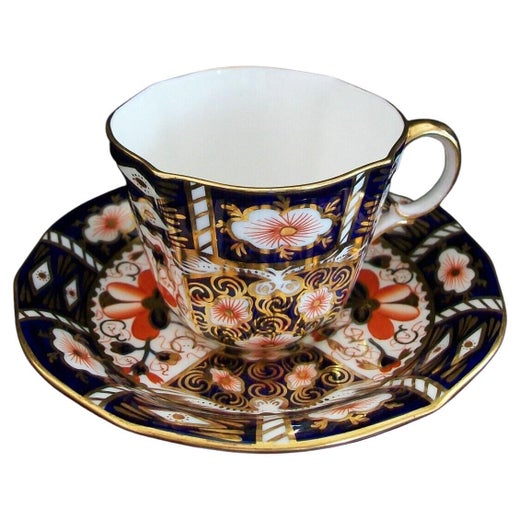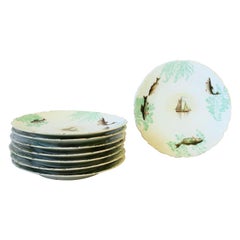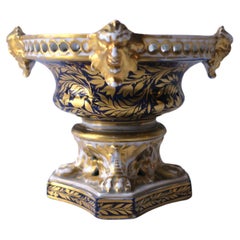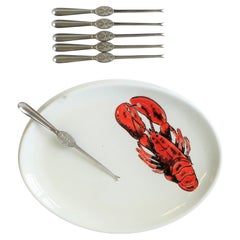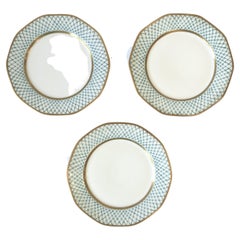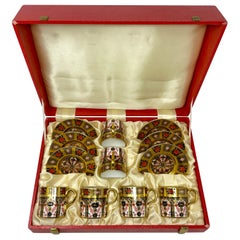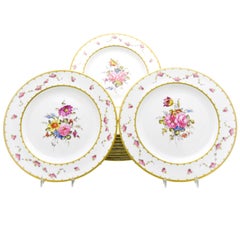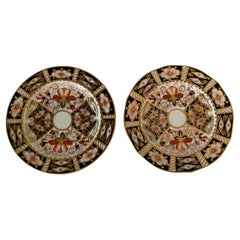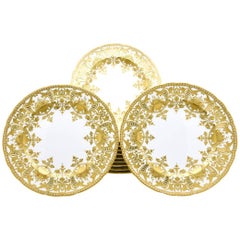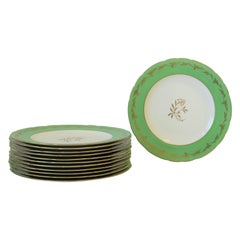
English Royal Crown Derby for Tiffany & Co. New York Dinner Plates, Set of 12
View Similar Items
English Royal Crown Derby for Tiffany & Co. New York Dinner Plates, Set of 12
About the Item
- Creator:Royal Crown Derby Porcelain (Maker),Tiffany & Co. (Designer)
- Dimensions:Height: 0.75 in (1.91 cm)Diameter: 10 in (25.4 cm)
- Sold As:Set of 12
- Materials and Techniques:Porcelain,Glazed
- Place of Origin:
- Period:
- Date of Manufacture:circa 20th Century
- Condition:Wear consistent with age and use. Minor losses.
- Seller Location:New York, NY
- Reference Number:1stDibs: LU1314213872521
Tiffany & Co.
Tiffany & Co. is one of the most prominent purveyors of luxury goods in the United States, and has long been an important arbiter of style in the design of diamond engagement rings. A young Franklin Delano Roosevelt proposed to his future wife, Eleanor, with a Tiffany ring in 1904. Vanderbilts, Whitneys, Astors and members of the Russian imperial family all wore Tiffany & Co. jewelry. And Jacqueline Kennedy Onassis preferred Tiffany china for state dinners at the White House.
Although synonymous with luxury today, the firm started out rather modestly. Charles Lewis Tiffany and John B. Young founded it in Connecticut as a “stationery and fancy goods emporium” in 1837, at a time when European imports still dominated the nascent American luxury market. In 1853, Charles Tiffany — who in 1845 had launched the company’s famed catalog, the Blue Book, and with it, the firm’s signature robin’s-egg blue, which he chose for the cover — shifted the focus to fine jewelry.
In 1868, Tiffany & Co. gained international recognition when it became the first U.S. firm to win an award for excellence in silverware at the Exposition Universelle in Paris. From then on, it belonged to the pantheon of American luxury brands.
At the start of the Gilded Age, in 1870, Tiffany & Co. opened its flagship store, described as a "palace of jewels" by the New York Times, at 15 Union Square West in Manhattan. Throughout this period, its designs for silver tableware, ceremonial silver, flatware and jewelry were highly sought-after indicators of status and taste. They also won the firm numerous accolades, including the grand prize for silverware at the Paris Exposition of 1878. Among the firm’s glittering creations from this time are masterworks of Art Nouveau jewelry, such as this delicate aquamarine necklace and this lavish plique-à-jour peridot and gold necklace, both circa 1900.
When Charles Lewis Tiffany died, in 1902, his son Louis Comfort Tiffany became the firm’s design director. Under his leadership, the Tiffany silver studio was a de facto design school for apprentice silversmiths, who worked alongside head artisan Edward C. Moore. The firm produced distinctive objects inspired by Japanese art and design, North American plants and flowers, and Native American patterns and crafts, adding aesthetic diversity to Tiffany & Co.’s distinguished repertoire.
Tiffany is also closely associated with diamonds, even lending its name to one particularly rare and exceptional yellow stone. The firm bought the Tiffany diamond in its raw state from the Kimberley mines of South Africa in 1878. Cut to create a 128.54-carat gem with an unprecedented 82 facets, it is one of the most spectacular examples of a yellow diamond in the world.
In a broader sense, Tiffany & Co. helped put diamonds on the map in 1886 by introducing the American marketplace to the solitaire diamond design, which is still among the most popular engagement-ring styles. The trademark Tiffany® Setting raises the stone above the band on six prongs, allowing its facets to catch the light. A lovely recent example is this circa-2000 platinum engagement ring. Displaying a different design and aesthetic (but equally chic) is this exquisite diamond and ruby ring from the 1930s.
Find Tiffany & Co. jewelry, serveware and decorative objects for sale on 1stDibs.
Royal Crown Derby Porcelain
Founded in 1750 by Andrew Planche and William Duesbury in Derby, England, the Royal Crown Derby Porcelain Company is one of the oldest original English manufacturers of fine bone china. Dating to the Georgian era, it has operated for more than 265 years.
In 1761, the company, then called Derby Porcelain, created its first commemorative piece for the coronation of King George III. In 1775, King George III recognized the uniqueness and high quality of Derby Porcelain, giving the company the honor of using a crown on its back stamp. Queen Victoria gave further honors to the porcelain manufacturer in 1890, when she awarded the company a royal warrant and bestowed upon it the title of “The Royal Crown Derby Porcelain Company.”
In the years following the first royal appointment, the company employed some of its finest artistic creators, such as watercolor landscape painter Zachariah Boreman; flower painters William Billingsley, William Pegg and Walter Withers; and figure painters Richard Askew and James Banford. The company produced the most sought-after collectible pieces in its history under the direction of William Duesbury II. He died at 34 and his full vision for the company went unrealized; it subsequently entered a period of decline.
In 1811, Robert Bloor revived the company by employing excellent painters and producing exquisite serving pieces that featured the Japanese Imari style of bold colors and lavish details. The popular design continues to be produced today. Modern pieces such as the paperweight collection also remain in demand more than 40 years after their introduction.
Under the creative control of different partners over time, the company has had three main locations. Its current base of operations is in Derby, where it continues to produce fine ceramics and decorative collectibles.
On 1stDibs, find a selection of Royal Crown Derby Porcelain Company bowls and baskets, dinner plates, centerpieces and more.
More From This Seller
View AllEarly 20th Century French Adirondack Tableware
Porcelain
Antique Early 19th Century English Empire Porcelain
Porcelain
Mid-20th Century Italian Tableware
Metal
Early 20th Century French Dinner Plates
Porcelain
Mid-20th Century American Tableware
Cotton
Late 20th Century Japanese Porcelain
Porcelain
You May Also Like
Mid-20th Century English Tableware
Porcelain
Antique Early 1900s English Dinner Plates
Porcelain
Vintage 1960s English Regency Porcelain
Porcelain
Antique Early 1900s English Neoclassical Dinner Plates
Gold
Early 20th Century British Porcelain
Porcelain, Paste
Early 20th Century British Neoclassical Dinner Plates
Porcelain, Paste
Recently Viewed
View AllRead More
Unexpected Gems Were All Over the Latest High-Jewelry Collections
Diamonds and sapphires still played a starring role, but less popular stones popped up too.
15 Scintillating Jewelry Watches to Elevate Your Holiday Style
Watchmakers have tucked their movements into all manner of precious baubles, from lapel pins to cocktail rings. The result is dazzling, wearable art that will get you to the party on time.
